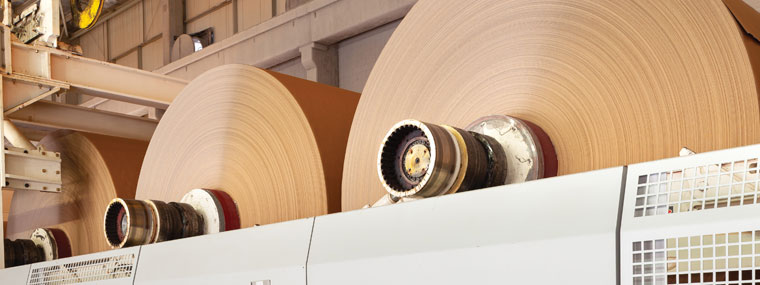
Unique Waterjet Applications
By Diane M. Calabrese / Published March 2023

Precision. Among the many benefits of waterjet technologies, exactness ranks high. Yet there’s also efficacy—speed and effectiveness in one. At pressures 5000 psi or higher, we are in waterjet range. (The higher end of the range now extends to six digits.)
What is unique today may be commonplace tomorrow in the context of waterjet applications, but let’s start with one use that has become familiar to all and was just an experimental procedure a few years ago. That’s ablation of tissue.
Many medical device companies now compete in the sphere of ablation. Being able to remove benign tissue growths with a high-pressure waterjet also means being able to do so without generating heat that could be damaging.
Removal of tissue in enlarged prostate glands is a medical procedure that’s no longer considered a rarity. How much pressure is used?
That’s a bit of a trade secret among the manufacturers that promote their waterjet ablation systems. But according to an article in Urology Times, pressure at the pump can be up to 10,000 psi.
The surgeon’s role in ablation via waterjet is in the assessment and programming of the device. Ultrasound analysis of a target region (a growth) gives the surgeon an image. That image is then used to program the action of the device to remove layers of tissue (parts of the growth).
A waterjet can make a cut to rival what can be achieved by a scalpel (and hand) capable of achieving the thinnest kerf (slit). And it does so with exceptional accuracy thanks to the computer guidance.
Ablation with waterjet is much more a complement to than a competitor of fixed ion beam (FIB) methods in prostrate treatment. When growths are benign, waterjet ablation is a good choice. When there are cancer cells present in growths, ion beam gives the assurance that they will be destroyed.
Why start with ablation of tissue? It’s illustrative of the way waterjet tools work in concert with other tools—and do so across industries.
From abrasives to heat and oscillating mechanisms, getting the most from the power of high pressure and ultra-high-pressure water very often involves a combined approach. Each part of the pairing contributes something.
Brad Howland, president of PowerJet Pressure Cleaning Systems (and Easy Kleen Pressure Systems Ltd.) in Sussex Corner, NB, Canada, gives us an example. His company manufactures an 11,000 psi, hot water, oil-fired diesel machine. The pressure and the 210ºF water combine to strip paint.
“These machines are for bridge paint removal in preparation for painting,” says Howland. They are also used for some ships.
The lower pressure (as opposed to preparation with 40,000 psi) makes the equipment safer to use. The hot water is what works synergistically to give the pressure the boost it requires. Howland’s company also offers smaller models of the machine that function at 7000 psi.
As Howland reflects on waterjet applications, he moves from beer to paper to pipelines. Beer exciters are used at the time of capping to put foam in beer.
Howland also highlights pipelines in paper mills as a place where waterjets assist in cleaning. Similarly, mining companies may use waterjets up to 7000 psi to clean slurry.
Also look to paper mills to find waterjets in service, says Howland. Cutting the edge so it can be recycled is a conservation measure for fiber.
In addition to paper and pulp cutters, Howland’s company manufactures waterjet plastic cutters. Custom-designed systems are a significant part of his company’s repertoire. Each design emerges with an eye toward reducing time and labor costs for the end user.
In addition to mills, shipyards, and settings where industrial painting contractors are at work, food plants, refineries and factories are facilities where waterjet equipment—stationary or trailer-mounted, both standard units (some 300 types) and custom—from Howland’s company are found. The range mirrors the varied ways in which high pressure as well as low pressure units support the industries that build the world.
Paper, Rock, Scissors
The pulp and paper industry has been using waterjet cutting for 30 years. Not only does the approach conserve fiber, but it also makes a clean, sharp cut. It’s like the difference in using a butter knife and a sharp bread knife to cut through a club sandwich. The former will squish down the layers as it cuts.
There’s a lot of mechanical stress trying to push through a club stack with a dull knife. That stress is present in any blade, even one that is thin kerf.
Pressure used in pulp and paper cutting ranges from about 14,503 to 43,511 psi (1000 to 3000 bar, one bar equals 14.50377 psi). Packaging weights for paper are generally measured in grams per square meter [gsm], but in ounces per square meter terms, a waterjet cutter can handle weights as low as 0.295 ounces per square yard (10 gsm) to weights heavier than 38.34 ounces per square yard. The heavy weights are used for packaging.
The plusses waterjets confer in cutting paper and pulp just begin with clean cuts. For example, they can be used to cut paper while it is on a dryer cylinder as well as when it is extended.
Look again at the low weight of paper (10 gsm) that a waterjet can zip through, and it puts one in the mind of fabric. Yes, waterjets are used to cut textiles.
Paper, textiles, and human tissue stack up on the soft side of matches for waterjet. But put hard substrates on the list, too.
Tile cutting is another industrial application. And back to the pipe cleaning, the mineral deposits that collect in pipes and tanks can be just as much of a challenge to clear as tiles are to cut. Waterjet meets it at about 20,000 psi.
Choosing the option of a modest high pressure (7000 to 11,000 psi) and hot water, as described in the first section, works well for coating removal on bridges and ships and more. For tougher industrial cleaning, the 40,000 psi—or ultra-high pressure range—comes into prominence. Among the tough industrial cleaning jobs may be those that require removing tar or concrete.
Of course, waterjets also help build, and not just by cutting the paper for packaging. They are used in metal fabrication and serve industry sectors from automotive to aerospace. Waterjet technology also serves the electronics and food preparation industries.
One advantage conferred by waterjet across industries is the way it carries along, or entrains, the remnants of its cutting—be it wood fibers in pulp and paper or metal burrs. That means an exceptionally clean surface is left following the cutting.
Clean cuts in the surgical theater are welcomed by everyone—faster recovery time and less damage to surrounding tissues. The surgical area provides a good example of the way many technologies converge because surgeons want the optimal approach. Ultrasonic (harmonic) cutters have been embraced for cutting bone, for instance.
Thus, in medicine, as well as heavy and advanced technology industries, the what-works-best approach puts waterjet in the mix with ion beam, laser, ultrasonic, and traditional cutting and sculpting methods.
Computer guided waterjet enables exceptional shape cutting options. And it yields results, or pieces, that have very refined edges. Uniformity of parts and reliable dimensions of parts are the foundation of durable products.
The marrying of robotics and waterjetting has been a boon across industries. In an old paper (1995) about the significance of a hands-off approach to coating removal in the aerospace industry, Burgess, Cosby and Hopper wrote about the way solid rocket boosters were refurbished for subsequent use (https://ntrs.nasa.gov/citations/19950025358).
The thermal protection system (TPS) on the boosters—the coating that protects them in ascent and descent—had to be ablated, or removed, gently. Burgess, Cosby, and Hopper were involved in research to determine whether
waterjet degreasing and paint stripping could be used instead of vapor degreasing, which contributes many ozone-depleting chemicals.
Waterjet was first applied manually by personnel wearing protective suits and using high pressure waterjet wands. The cited authors described that process this way: “The results were acceptable, but it was a very tiresome, tedious, and personally hazardous task.” Coupling robotics and waterjets made all the difference by making the process feasible.
There have been developments in all directions since then. Companies have spun from the NASA investment in technology to develop systems such as self-propelled robotic systems to deliver high pressures to challenging surfaces on ships as well as barges and drydocks.
Scissors, knives, and saw blades are not sitting in storage. But waterjet continues to invade niches. To textile cutting, add diapers and feminine hygiene products.
Systems for cutting in more than two dimensions also continue to multiply. Some of the 3D systems gain more power by using abrasives to augment high pressure; some do not.
Because waterjet technologies are assessed as friendly to the environment—using a minimum of water and often supplanting chemicals—they accomplish much in addition to the reduction of tedium and the reduction of hazards. And they “accomplish” with exceptional results.





